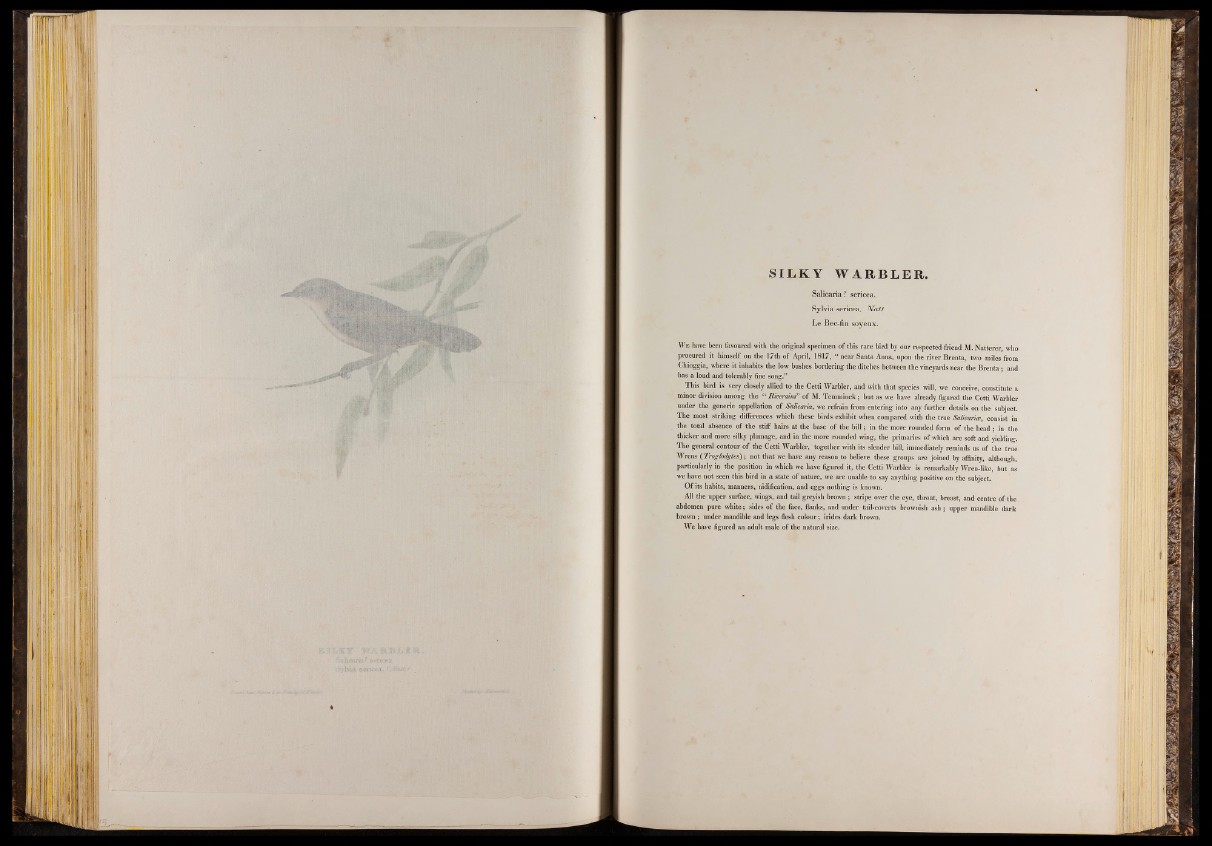
i f i
-i-- S I LK Y WA R B L E R .
Salicaria? sericea.
Sylvia sericea, Natt.
Le Bec-fin soyeux.
We have been favoured with the original specimen of this rare bird by our respected friend M. Natterer, who
procured it himself on the 17th of April, 1817, “ near Santa Anna, upon the river Brenta, two miles from
Chioggia, where it inhabits the low bushes bordering the ditches between the vineyards near the Brenta; and
has a loud and tolerably fine song.”
This bird is very closely allied to the Cetti Warbler, and with that species will, we conceive, constitute a
minor division among the “ Riverains” of M. Temminck; but as we have already figured the Cetti Warbler
under the generic appellation of Salicaria, we refrain from entering into any further details on the subject.
The most striking differences which these birds exhibit when compared with the true Salicaria, consist in
the total absence of the stiff hairs at the base of the bill; in the more rounded form of the head; in the
thicker and more silky plumage, and in the more rounded wing, the primaries of which are soft and yielding.
The general contour of the Cetti Warbler, together with its slender bill, immediately reminds us of the true
Wrens ( Troglodytes); not that we have any reason to believe these groups are joined by affinity, although,
particularly in the position in which we have figured it, the Cetti Warbler is remarkably Wren-like, but as
we have not seen this bird in a state of nature, we are unable to say anything positive on the subject.
Of its habits, manners, nidification, and eggs nothing is known.
All the upper surface, wings, and tail greyish brown ; stripe over the eye, throat, breast, and centre of the.
abdomen pure white; sides of the face, flanks, and under tail-coverts brownish ash; upper mandible dark
brown ; under mandible and legs flesh colour; irides dark brown.
We have figured an adult male of the natural size.